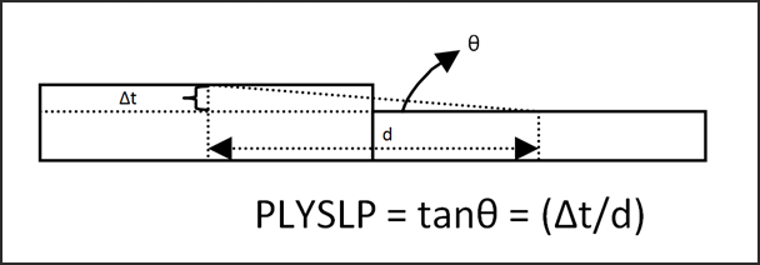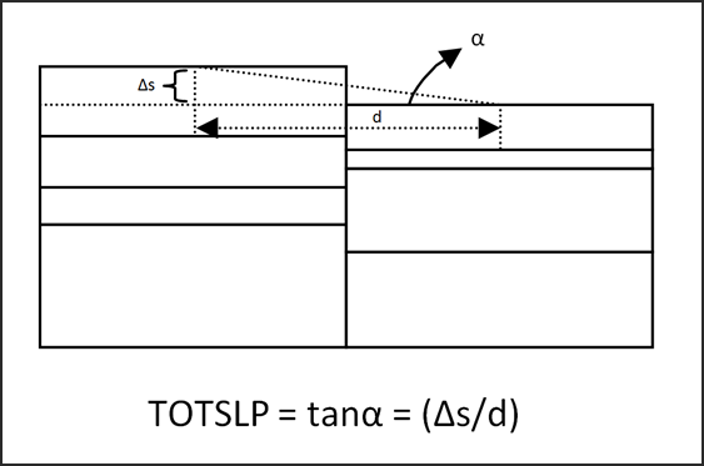/DSIZE
Optimization Keyword Defines parameters for the generation of free-size design variables.
Format
| (1) | (2) | (3) | (4) | (5) | (6) | (7) | (8) | (9) | (10) |
|---|---|---|---|---|---|---|---|---|---|
| /DSIZE/dsize_ID | |||||||||
| title | |||||||||
| grpart_ID | THICK | STRES | MEMBSIZ | PATRN | PATREP | NGROUP | COMP | ||
| (1) | (2) | (3) | (4) | (5) | (6) | (7) | (8) | (9) | (10) |
|---|---|---|---|---|---|---|---|---|---|
| T0 | T1 | ||||||||
| (1) | (2) | (3) | (4) | (5) | (6) | (7) | (8) | (9) | (10) |
|---|---|---|---|---|---|---|---|---|---|
| MAXSTRS | |||||||||
| (1) | (2) | (3) | (4) | (5) | (6) | (7) | (8) | (9) | (10) |
|---|---|---|---|---|---|---|---|---|---|
| MINDIM | |||||||||
| (1) | (2) | (3) | (4) | (5) | (6) | (7) | (8) | (9) | (10) |
|---|---|---|---|---|---|---|---|---|---|
| TYP | AID | XA | YA | ZA | |||||
| FIX | XF | YF | ZF | ||||||
| UCYC | SID | XS | YS | ZS | |||||
| (1) | (2) | (3) | (4) | (5) | (6) | (7) | (8) | (9) | (10) |
|---|---|---|---|---|---|---|---|---|---|
| ptrepCID | |||||||||
| CAID | XCA | YCA | ZCA | ||||||
| CFID | XCF | YCF | ZCF | ||||||
| CSID | XCS | YCS | ZCS | ||||||
| CTID | XCT | YCT | ZCT | ||||||
| (1) | (2) | (3) | (4) | (5) | (6) | (7) | (8) | (9) | (10) |
|---|---|---|---|---|---|---|---|---|---|
| mainID | SX | SY | SZ | ||||||
| ptreCID | |||||||||
| CAID | XCA | YCA | ZCA | ||||||
| CFID | XCF | YCF | ZCF | ||||||
| CSID | XCS | YCS | ZCS | ||||||
| CTID | XCT | YCT | ZCT | ||||||
| (1) | (2) | (3) | (4) | (5) | (6) | (7) | (8) | (9) | (10) |
|---|---|---|---|---|---|---|---|---|---|
| CTYP=1: | |||||||||
| CTYP | LTMIN | LTMAX | grsh3n_ID | grshel_ID | LTEXC | ||||
| CTYP=2: | |||||||||
| CTYP | PTANGLE | PTMIN | PTMAX | grsh3n_ID | grshel_ID | PTEXC | |||
| CTYP=3: | |||||||||
| CTYP | PPANGLE | PPMIN | PPMAX | grsh3n_ID | grshel_ID | PPEXC | |||
| CTYP=4: | |||||||||
| CTYP | PMANGLE | PMMAN | grsh3n_ID | grshel_ID | PMEXC | ||||
| CTYP=5: | |||||||||
| CTYP | BANGLE1 | BANGLE2 | |||||||
| CTYP=6: | |||||||||
| CTYP | CANGLE | CTHICK | |||||||
| CTYP=7: | |||||||||
| CTYP | PDANGLE | PDTYP | PDMAX | grsh3n_ID | grshel_ID | PDEXC | |||
| (1) | (2) | (3) | (4) | (5) | (6) | (7) | (8) | (9) | (10) |
|---|---|---|---|---|---|---|---|---|---|
| ETYP1 | EGRP1 | ||||||||
| ETYP2 | EGRP2 | ||||||||
| etc | etc |
Definitions
| Field | Contents | SI Unit Example |
|---|---|---|
| dsize_ID | Free-size design variable
identifier. (Integer > 0) |
|
| title | Title. (Character, maximum 100 characters) |
|
| grpart_ID | Part group identifier
defining the design space. (Integer > 0) |
|
| THICK | Indicates if minimum and
possibly maximum thickness values need to be defined.
(Integer ≥ 0) |
|
| T0 | Minimum thickness. (Real > 0.0 or blank) |
|
| T1 | Maximum thickness. (Real > 0.0 or blank) |
|
| STRESS | Indicates if von Mises
stress constraint needs to be defined.
(Integer) |
|
| MAXSTRS | Upper bound constraint on
von Mises stress. No default (Real > 0.0) |
|
| MEMBSIZ | Active member size control flag.
(Integer ≥ 0) |
|
| MINDIM | Minimum diameter of
members formed is specified. This field can be used to eliminate
small members. It also eliminates checkerboard results. Default = No minimum member size control (Real > 0.0) |
|
| PATRN | Active pattern grouping flag.
(Integer) |
|
| TYP | Pattern grouping type requested.
Default = No pattern grouping (Integer) |
|
| AID | Variable pattern grouping
anchor node identifier.
(Integer > 0 or blank) |
|
| XA, YA, ZA | Coordinates of the pattern
grouping anchor point.
(Real or blank) |
|
| FID | Node identifier that
defines the direction of the first vector for variable pattern
grouping.
(Integer > 0 or blank) |
|
| XF, YF, ZF | Components of the first
vector that defines pattern grouping.
(Real or blank) |
|
| UCYC | Number of cyclical
repetitions for cyclical symmetry. This field defines the number of
radial "wedges" for cyclical symmetry. The angle of each wedge is
computed as: 360.0/UCYC. Default = blank (Integer > 0 or blank) |
|
| SID | Node identifier of the
second point for pattern grouping definition.
(Integer or blank) |
|
| XS, YS, ZS | Coordinates of the second
point for pattern grouping definition.
(Real or blank) |
|
| PATREP | Indicates if pattern
repetition is defined and repetition type.
(Integer) |
|
| mainID | Main
/DSIZE identifier for pattern
definition. This field is required only for PATREP =2. (Integer > 0) |
|
| SX, SY, SZ | Scale factors for pattern
repetition in the X, Y, and Z directions, respectively. Default = 1.0 (Real > 0.0) |
|
| ptrepCID | Skew identifier used as
the pattern repetition coordinate system. Default = 0 (Integer > 0) |
|
| CAID | Node identifier of an
anchor point for the definition of a pattern repetition coordinate
system.
(Integer > 0 or blank) |
|
| XCA, YCA, ZCA | Coordinates of an anchor
point for the definition of a pattern repetition coordinate
system.
(Real or blank) |
|
| CFID | Node identifier of the
first point for the definition of a pattern repetition coordinate
system.
(Integer > 0 or blank) |
|
| XCF, YCF, ZCF | Coordinates of the first
point for the definition of a pattern repetition coordinate
system.
(Real or blank) |
|
| CSID | Node identifier of a
second point for the definition of a pattern repetition coordinate
system.
(Integer > 0 or blank) |
|
| XCS, YCS, ZCS | Coordinates of a second
point for the definition of a pattern repetition coordinate
system.
(Real or blank) |
|
| CTID | Node identifier of a third
point for the definition of a pattern repetition coordinate
system.
(Integer > 0 or blank) |
|
| XCT, YCT, ZCT | Coordinates of a third
point for the definition of a pattern repetition coordinate
system.
(Real or blank) |
|
| NGROUP | Number of element groups
used in zone based free-sizing optimization. Default = 0 (Integer ≥ 0) |
|
| ETYPi | Type of followed element group.
(Integer > 0), i=1, ..., NGROUP |
|
| EGRPi | Element group numbers used
in zone based free-sizing optimization. (Integer > 0), i=1, ...,NGROUP |
|
| COMP | Composite manufacturing constraints applied are indicated. Information about manufacturing constraints is to follow. The value of COMP is equal to the total number of composite manufacturing definitions that follow. | |
| CTYP | Composite manufacturing
type definition flag.
(Integer) |
|
| LTMIN | Minimum laminate thickness
for the laminate thickness constraint (CTYP =
1). (Real or blank) |
|
| LTMAX | Maximum laminate thickness
for the laminate thickness constraint (CTYP =
1). (Real or blank) |
|
| grsh3n_ID | 3-node shell group
identifier. (Integer > 0) |
|
| grshel_ID | 4-node shell group
identifier. (Integer > 0) |
|
| LTEXC | Indicates that certain
plies are excluded from the laminate thickness constraint
(CTYP = 1). Support options are:
(Integer) |
|
| PTANGLE | Ply orientation in degrees
to which the ply thickness constraint (CTYP =
2) is applied. (Real) |
|
| PTMIN | Minimum thickness for the
ply thickness constraint (CTYP =
2). (Real or blank) |
|
| PTMAX | Maximum thickness for the
ply thickness constraint (CTYP =
2). (Real or blank) |
|
| PTEXC | Indicates that certain
plies are excluded from the ply thickness constraint
(CTYP = 2). Supported
options are:
(Integer) |
|
| PPANGLE | Ply orientation in degrees
to which the ply thickness percentage constraint is applied
(CTYP =
3). (Real) |
|
| PPMIN | Minimum percentage
thickness for the ply thickness percentage constraint
(CTYP = 3). (Real or blank) |
|
| PPMAX | Maximum percentage
thickness for the ply thickness percentage constraint
(CTYP = 3). (Real or blank) |
|
| PPEXC | Indicates that certain
plies are excluded from the ply thickness percentage constraint
(CTYP = 3). Supported
options are:
(Integer) |
|
| PMANGLE | Ply orientation in degrees
to which the manufacturable ply thickness constraint is applied
(CTYP =
4). (Real) |
|
| PMMAN | Manufacturable ply
thickness. Default = blank (Real > 0.0) |
|
| PMEXC | Indicates that certain
plies are excluded from the manufacturable ply thickness constraint
(CTYP = 4). Supported
options are:
(Integer) |
|
| BANGLE1 | First ply orientation in
degrees to which the balance constraint is applied
(CTYP =
5). (Real) |
|
| BANGLE2 | Second ply orientation in
degrees to which the balance constraint is applied
(CTYP =
5). (Real) |
|
| CANGLE | Ply orientation in degrees
to which the constant thickness constraint is applied
(CTYP =
6). (Real) |
|
| CTHICK | Constant ply thickness for
the constant thickness constraint (CTYP =
6). (Real) |
|
| PDANGLE | Ply orientation in degrees
to which the ply drop-off constraint is applied
(CTYP =
7). (Real) |
|
| PDTYP | Drop-off constraint type:
2
(Integer) |
|
| PDMAX | Maximum allowed drop-off
for the ply drop-off constraint (CTYP =
7). (Real) |
|
| PDEXC | Indicates that certain
plies are excluded from the ply drop-off constraint
(CTYP = 7). Supported
options are:
(Integer) |
Example
# Free size parameters
#---1----|----2----|----3----|----4----|----5----|----6----|----7----|----8----|----9----|---10----|
/DSIZE/3000
freeSizeOpti
### COPM=6: 6 composite manufacturing constraints are applied
### CTYP=3: Ply thickness percentage constraints are applied
### CTYP=4: Manufacturable ply thickness constraints are applied.
### CTYP=5: A balance constraint is applied.
#---1----|----2----|----3----|----4----|----5----|----6----|----7----|----8----|----9----|---10----|
# grpartID THICK STRESS MEMBSIZ PATRN PATREP NGROUP COMP
10001 0 0 0 0 0 0 6
# CTYP=3 PPANGLE PPMIN PPMAX grsh3n_ID grshel_ID PPEXC
3 0. 0. 0.8
# CTYP=4 PMANGLE PMMAN grsh3n_ID grshel_ID PMEXC
4 0. 0.1
# CTYP=4 PMANGLE PMMAN grsh3n_ID grshel_ID PMEXC
4 45.0 0.1
# CTYP=4 PMANGLE PMMAN grsh3n_ID grshel_ID PMEXC
4 -45.0 0.1
# CTYP=4 PMANGLE PMMAN grsh3n_ID grshel_ID PMEXC
4 90. 0.1
# CTYP=5 BANGLE1 BANGLE2
5 45.0 -45.0
#---1----|----2----|----3----|----4----|----5----|----6----|----7----|----8----|----9----|---10----|Comments
- This entry is represented as an optimization objective in HyperMesh and HyperCrash.
- The options for selecting the type
of drop-off constraints for PDTYP are defined for a set of
plies.The PDTYP options are:
- PLYSLP
- PLYDRP
- TOTSLP
- TOTDRP
Figure 1.Assuming that the plies are stacked as shown above, the following definition is:
Figure 2.
Figure 3.
Figure 4.
Figure 5.

